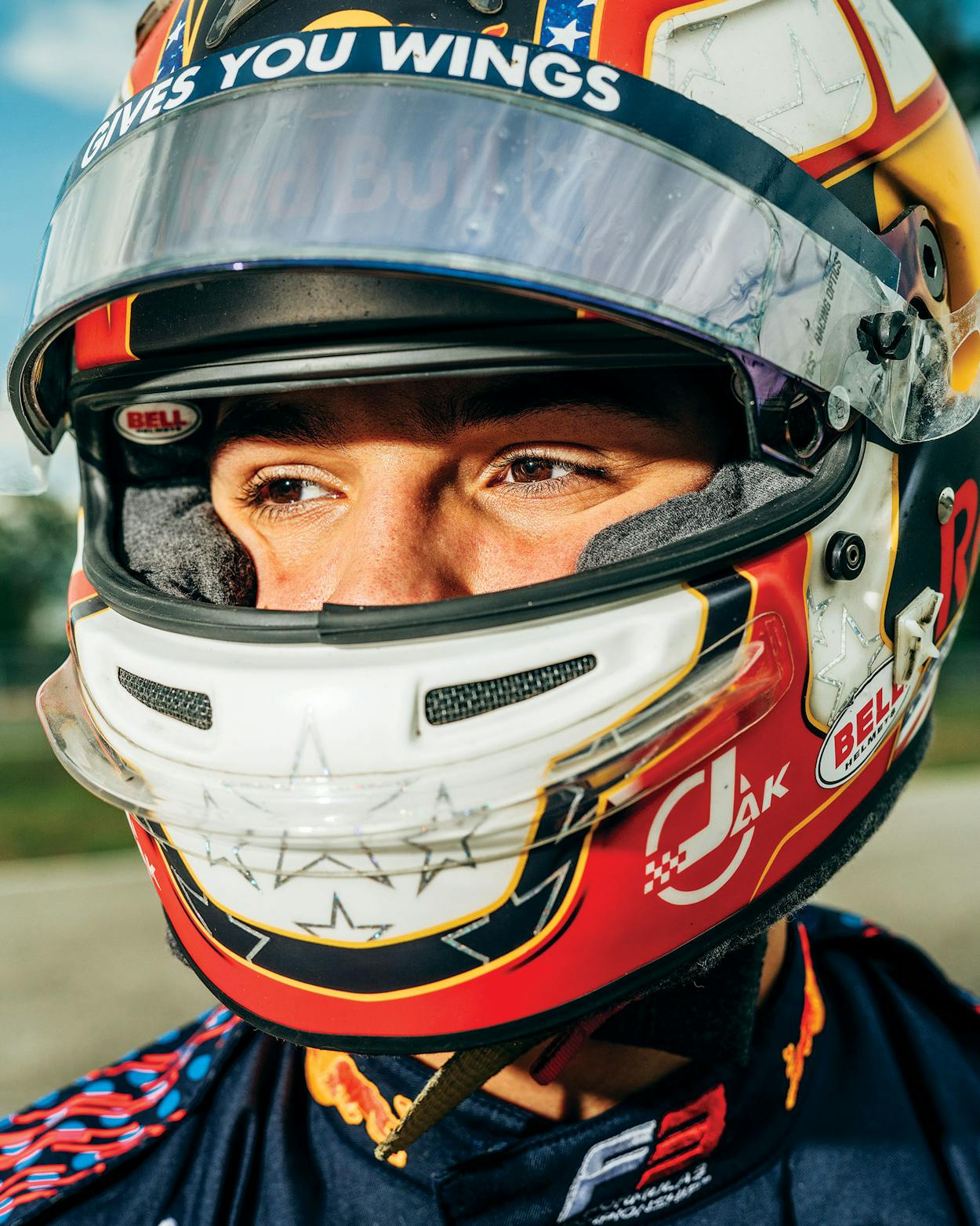Early on a rainy July morning in the Austrian Alps, seventeen-year-old Jak Crawford strapped himself into a sleek, black, open-cockpit race car and lowered his helmet visor. Twenty-nine cars were lined up in two columns on the starting grid, their engines rumbling as mechanics made last-minute adjustments. The air smelled like gasoline, hot rubber, and ozone. Jak would start the race in tenth place, the result of a poor qualifying session. But he thought the weather might give him a chance. On a wet track, drivers often hydroplane, spin out, or simply lose visibility—creating opportunities for the cars behind them. “The rain creates chaos,” he had told me the previous day. “And I probably need a bit of chaos.”
Jak grew up in the Houston suburbs, where he started racing kid karts at the age of six. Within a year, he was winning statewide races. Then came national victories. Then international ones. In 2020 he joined the driver academy of Red Bull Racing, a powerhouse in Formula 1, the world’s most elite motor sport. It was on this very track—the Red Bull Ring, in Spielberg, a picturesque village nestled in the verdant mountains of southeast Austria—where Jak first tried out for the team. Red Bull signed him to a five-year contract on the spot. Since then, the Texas teenager has been working his way up through the sport’s minor leagues, starting in Formula 4 and quickly progressing to Formula 3.
Entering the race, Jak was ranked fifth out of the 22 drivers with at least one point in the F3 standings, which are determined by points earned from race results. After a middling performance in Silverstone, England, the previous week, where he finished sixth, Jak was desperate to make up ground. The weekend hadn’t gotten off to a promising start. On Friday afternoon, Jak was sluggish in the qualifying session, where drivers compete to put up the quickest lap. His father, Tim, a real estate developer in the Woodlands, north of Houston, had traveled to Austria to watch the race. He spent the session texting with his wife, Nikki, back in Texas. “Why are the times so bad?” she asked. Tim didn’t know.
Jak was unfazed. “I know you’re worried,” he later told his dad outside the team garage, where a trio of mechanics were working on his car. “But you don’t need to be.” It was an odd sight—the son, who had just been hurtling around a track at death-defying speeds, reassuring the father.
Each F3 weekend features a qualifying session and two races: a so-called sprint race on Saturday and a longer feature race on Sunday. For sprint races, the starting grid is determined by reversing the order of the twelve fastest qualifiers, meaning Jak would start in third position. He made the most of the opportunity, deftly slipping past Argentine driver Franco Colapinto on lap ten and swooping in front of Brazilian race leader Caio Collet coming out of a hairpin turn on the fourteenth lap. Collet threatened Jak for the rest of the race but couldn’t find a way past the Texan, who crossed the finish line first by six-tenths of a second. It was Jak’s first win of the season. “Took a long time for that one, but we got it,” a relieved-sounding Jak told his team over the radio as he made a victory lap.
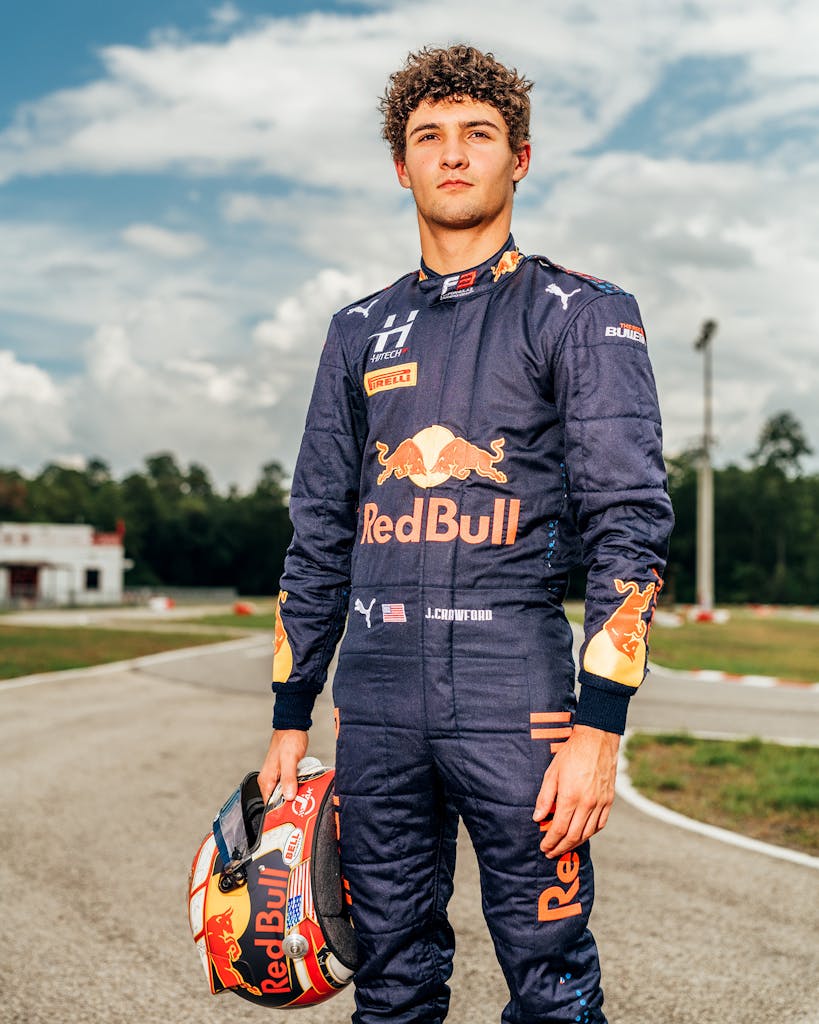
The win gave Jak ten much-needed points. But Sunday’s race offered the big prize—and a chance for Jak to show Red Bull that he deserved promotion. Like every other driver in F3, Jak is focused on a single goal: advancing to Formula 2, the next rung on the ladder that leads, for a lucky few, to Formula 1. Becoming an F1 driver, with all the attendant money and fame, is among the highest achievements in sports. There are usually only twenty driver seats in the series, and only a handful open up each year, whether because of retirement, injury, or a driver getting fired by his team. Because competition for those seats is so intense, even the best drivers often need some kind of an edge. Having a father who owns an F1 team helps. So does being the son of a famous driver. Being sponsored by a billionaire also tends to get attention.
Jak doesn’t have any of those advantages. But he does have something rare in F1 history: a U.S. birth certificate. And for a league that’s eager to expand its American fan base, that may be all the edge he needs. The most recent American to compete in F1 was IndyCar driver Alexander Rossi, who made five starts in the 2015 season. Jak isn’t the only American with a potential shot at an F1 seat: Florida-born Logan Sargeant is currently in third place for the F2 championship. The Williams Racing F1 team is rumored to have interest in him for next season.
Competing as an American in F1 “would be an honor,” Jak told me earlier this summer over lunch at a Whataburger near his parents’ home, in Conroe, forty miles north of downtown Houston. Standing five feet eleven, with a mop of curly brown hair and the faintest suggestion of a goatee, he looked like any other seventeen-year-old kid save for an unusually muscular neck. Jak’s workouts often include special neck exercises that help him withstand the g-forces of an F3 race car, which can go from 0 to 62 miles per hour in 3.1 seconds and reach a top speed of 186 mph. “After a race weekend, I’ll have aches in my shoulder, in my neck,” he said. “It takes a day or two to recover.”
We had just finished driving go-karts at Speedsportz Racing Park, a track in New Caney owned by Tim. Jak tore effortlessly around the track at top speed, barely braking for corners, while I mostly concentrated on avoiding a crash. Jak started racing at tracks like this, in a tiny “bambino kart” his parents bought, wearing a crash helmet that made him look like a bobblehead doll. “He picked it up really, really fast,” Tim told me. “He was just good right away.”
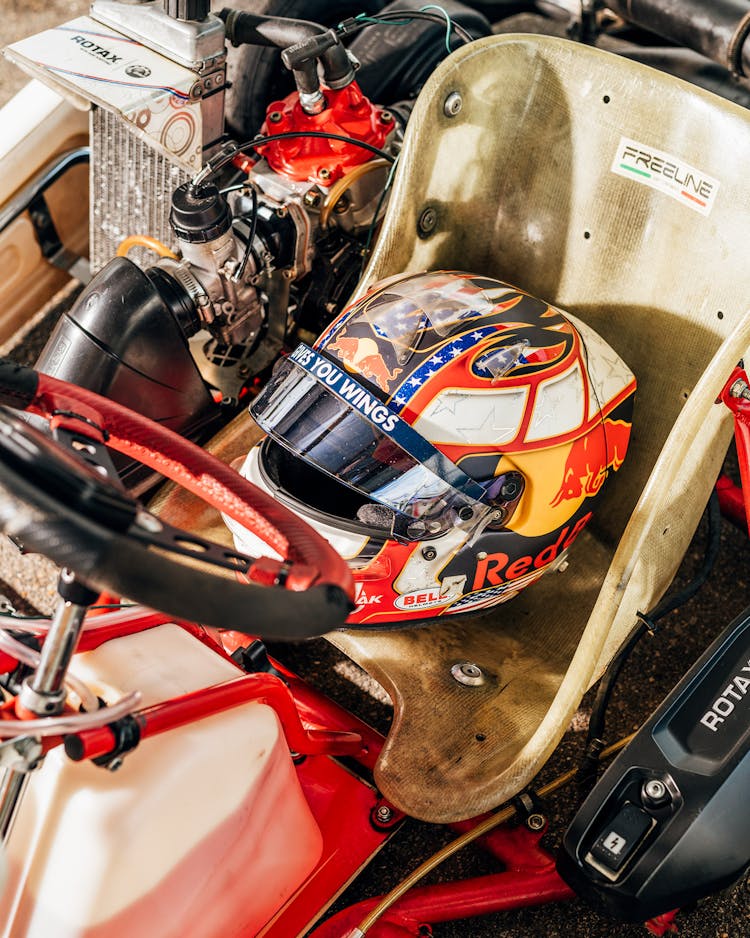
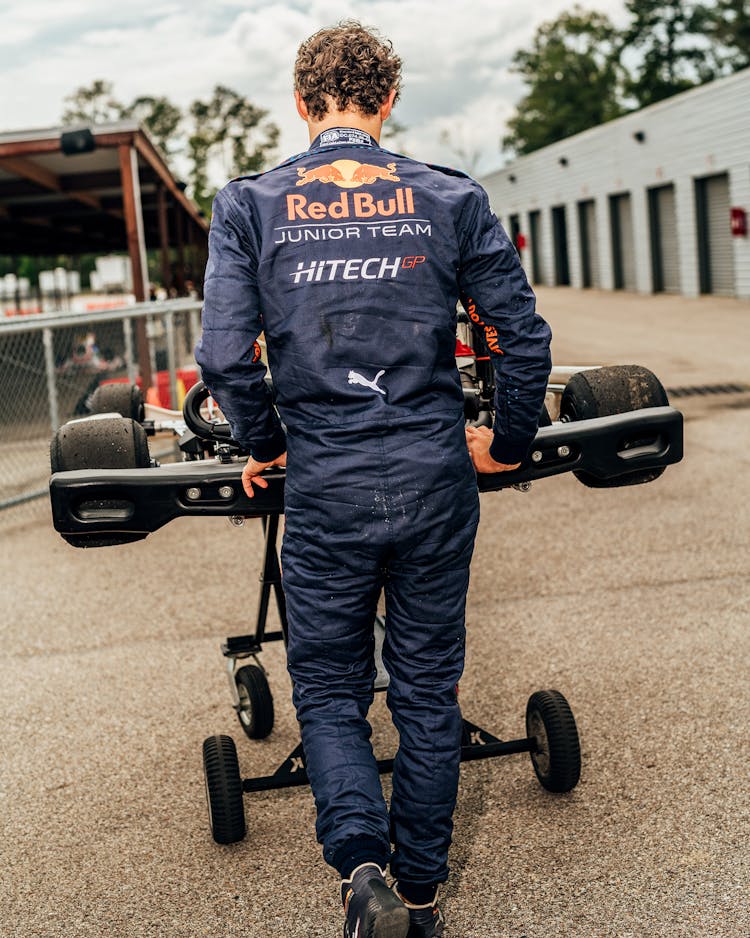
For the first few years, karting was something fun that Tim did with his son on weekends. Then he started entering Jak in races, where the boy’s talent immediately became apparent. “Every time we moved him up to the next level, he adapted and kept winning,” he told me. At the age of ten, Jak earned the second-place trophy in one of karting’s largest races, in Italy. “That’s when we all got the idea that, wow, this is going to take off,” Tim said.
Initially, Tim and Jak weren’t shooting for F1. Jak was born in North Carolina, the birthplace of NASCAR, and grew up watching races with his dad. Either NASCAR or IndyCar, America’s premier open-cockpit racing league, seemed like obvious targets. But Jak’s karting success attracted the attention of European racing teams. He began spending more time in Europe, racing against young drivers from around the world, many of whom had also left home in pursuit of racing glory. “I’m not saying American drivers aren’t good, but it’s almost another level in Europe,” Jak told me.
What had started as a pastime was starting to look like a career. Although he had attended elementary and middle school in the Houston area, Jak now had to choose between attending high school in Texas, which would have precluded a career in Formula racing, or enrolling in an online high school, which would allow him to spend nearly half the year in Europe. He chose Europe. He now divides his time between Conroe and the Red Bull junior team headquarters, outside Oxford, England.
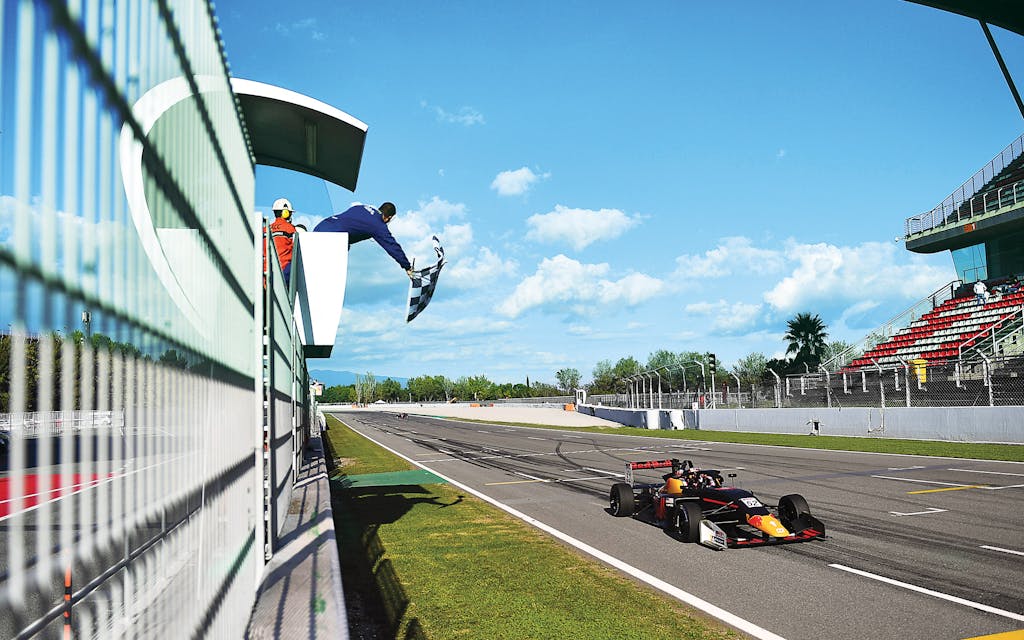
It was a big decision for his parents as well. Auto racing is an expensive sport, and it gets more expensive the higher you climb. Only drivers who make it to F1 earn real money. Rookie salaries start in the low to mid hundreds of thousands of dollars, while seven-time world champion Lewis Hamilton’s contract is estimated to be more than $40 million, plus additional millions in sponsorships.
By contrast, drivers must pay for the privilege of racing in a feeder series. Participating in F3 costs around $1 million a year. That doesn’t include international travel—there were races this season in seven European countries and Bahrain—or the expense of repairing damaged cars, which is borne by the driver. (Many parents, including Tim, buy insurance policies to cover race damage.) Jak’s contract with Red Bull helps defray that cost, but the financial burden of being a “RACEDAD,” as the vanity plate on Tim’s Land Rover reads, is substantial. “Parents ask me all the time about getting their kids into racing,” Tim told me. “I’m like, dude, go play baseball.”
Jak tore effortlessly around the track at top speed, barely braking for corners, while I mostly concentrated on avoiding a crash.
When Jak signed with Red Bull, he essentially handed control of his career to Red Bull’s head of driver development, an imposing Austrian septuagenarian named Helmut Marko. Marko was an F1 driver in the early seventies, until a pebble kicked up during a race punctured his helmet visor and blinded his left eye. He’s now responsible for training the dozen or so teenage drivers on Red Bull’s junior team. To Jak, Marko is simply “my boss.” Marko helps decide which F3 Red Bull drivers get promoted to F2 for the 2023 season. Depending on how he performed in that league, Marko might then recommend him for F1.
“I think about F1 all the time,” Jak told me at Whataburger. “You can make a million dollars a year. You’re racing the fastest cars. You’re traveling the world. That sounds like a dream.”
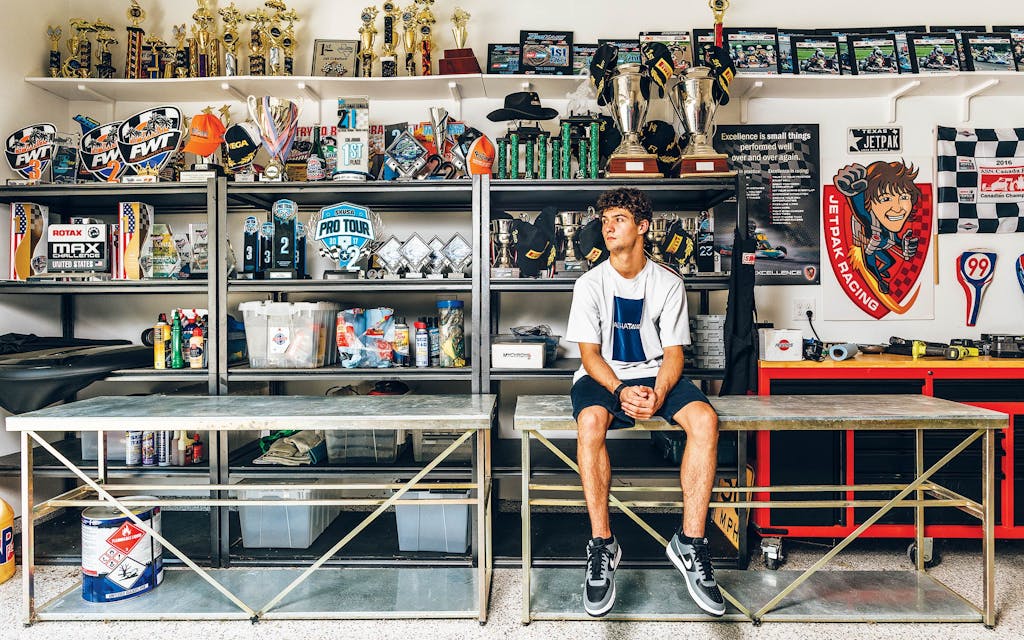
Because of the slippery conditions, Sunday’s feature race began behind a safety car. For the first few laps, the drivers stayed in single file, cautiously weaving back and forth to warm up their tires. Finally, the safety car exited the track, and the drivers got the green flag to start racing.
Within two laps, Jak passed two cars, bringing himself up to eighth place. Making the next overtake proved trickier. Lap after lap, Jak nipped at the heels of British driver Jonny Edgar, a fellow Red Bull junior in a nearly identical car. On pit lane, watching the race on a massive jumbotron suspended above the grandstand, Tim was visibly frustrated. “Every person we don’t want to get points is ahead of him,” he said. Several laps later, with Jak still in eighth place, Tim began pacing back and forth. “F—ing hell,” he muttered to himself.
Suddenly, the chaos that Jak had hoped for seemed to erupt. A collision in the middle of the pack sent several cars spinning off the track. “That’s it!” Tim yelled. His excitement was short-lived. The crash had occurred well behind Jak. A few laps later came another accident—also behind Jak.
Finally, with just three laps to go, Jak took a chance on the long straightaway leading to the finish line, darting around Edgar to claim seventh position. Approaching turn one, a nearly ninety-degree curve to the right, Edgar pulled up alongside Jak’s right side, trying to retake the lead. Holding the outside line, Jak looked set to hold Edgar off. But as he applied his brakes to make the turn, his car was suddenly jolted from behind by Edgar, who was hit by the white-and-blue car of Collet—the driver Jak had passed to win the sprint race the previous day—sending the two Red Bull cars spinning to a stop near the middle of the track as car after car zipped past.
The entire incident took less than a second. “What just happened?” I asked Tim. He shook his head and stared at the ground. On my headset, I could hear Jak talking. “I just got destroyed from the rear,” he said. He rejoined the race but was now in twenty-third place, and he finished just one spot higher. He would come out of the day without a single point.
Back at the garage after the race, Jak was philosophical about the weekend. “Obviously, qualifying didn’t go to plan,” he said. “But then I made up for it in the sprint race. And I was doing well in the feature race until I got crashed out. I can’t be disappointed in myself about it. Just about the circumstances.” Was there ever a moment, I asked, when he considered settling for eighth place? With three laps to go and already in position to score much-needed points, why risk it all by going for more? Jak seemed offended by the suggestion. “If I finished eighth, I would only have scored four points,” he responded. “I need more than that. So I was always going to go for it.”
Marko encourages such risk-taking. “That’s our approach at Red Bull,” he told me in September over Zoom from his office in Austria. “We prefer someone trying and falling off instead of staying somewhere in tenth position, where nothing happens.”
Although the final four races of the season proved to be a string of up-and-down performances—Jak failed to notch another win and finished seventh in the driver standings—he impressed Marko enough to earn a coveted promotion to F2. Next year, Jak will compete on the England-based Hitech team alongside eighteen-year old French-Algerian driver Isack Hadjar, a fellow Red Bull junior. But Marko made it clear that he expected more from the young Texan. “He has to be, straightaway, a front-runner,” he told me. “He has to give the team a feeling that this is a guy who really wants it. Who will do everything to succeed.”
This article originally appeared in the November 2022 issue of Texas Monthly with the headline “The Winning Formula.” Subscribe today.
